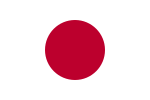Ikebana (生け花, 活け花, 'arranging flowers' or 'making flowers alive') is the Japanese art of flower arrangement. It is also known as kadō (華道, 'way of flowers')...
50 KB (5,483 words) - 03:20, 12 November 2024
Ko-ryū (section Ikebana (Flower-Arranging))
aesthetic form. Ko-ryū is one of the oldest and most traditional schools of Ikebana. From it, various other schools have formed that carry its name, such as...
4 KB (402 words) - 20:03, 18 August 2024
recipient or viewer without needing the use of words. Language of flowers Ikebana Plant symbolism "サギソウの花言葉". 花言葉-由来. Retrieved 14 August 2020. Gatti, Sabrina...
11 KB (77 words) - 09:03, 15 September 2024
Banmi Shōfū-ryū (redirect from Banmi Shofu Ryu of Ikebana)
(晩美生風流) is a school of Ikebana, an ancient Japanese art form that involves arranging flowers for spiritual purposes. Ikebana accompanied Buddhism's arrival...
29 KB (3,181 words) - 09:33, 11 November 2024
Ikenobō (池坊) is the oldest and largest school of ikebana, the Japanese practice of giving plants and flowers invigorated new life. The Buddhist practice...
13 KB (1,718 words) - 22:00, 21 October 2024
Religion Buddhism Christianity New religions Shinto Art Bonsai Gardens Ikebana Pottery and porcelain Literature Light novel Manga Poetry Music and performing...
147 KB (13,538 words) - 17:37, 12 November 2024
again while acting in Angels in America. She is also a practitioner of ikebana, the art of Japanese flower arrangement, which her mother learned while...
29 KB (1,876 words) - 22:32, 28 October 2024
Teshigahara Sōfū, 1900–1979) was the founder of the Sōgetsu-ryū school of ikebana flower arranging. He was born in Tokyo. He learned flower arranging from...
3 KB (311 words) - 20:02, 11 January 2022








